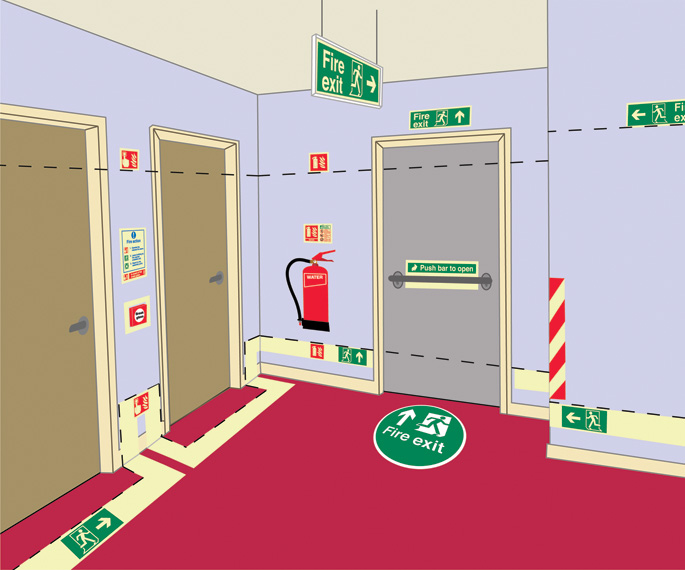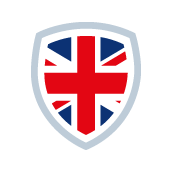Introduction to Safety Signs
On this page you will find our guide to Safety Signs, this covers;The Importance of Shape and Colour, Sign Selection Viewing Distances and Safety Way Guidance System
Introduction to Safety Signs
The Importance of Shape and Colour
 |
Prohibition |
 |
Hazard |
 |
Mandatory Action |
 |
Fire Equipment |
 |
Safe Condition, Escape Route |
Means of Escape
The requirements for escape route signage are determined by appropriate risk assessment
In the design of escape route signage systems, reference should be made to the following standards
BS 5499, Part 4 : 2000 Safety signs, including fire safety signs. Code of practice for escape route signing.
Sign Selection Viewing Distance

Viewing distance calculated using the overall height of the graphical symbol (h)
With reference to BS 5499-4:2000, based on a vertical illuminance of 100 lux, the above table details ‘Examples of maximum viewing distances for externally illuminated escape route signs of different graphical symbol height’
BS ISO 16069 : 2004 Graphical symbols. Safety signs. Safety way guidance systems (SWGS).
Subject to a risk assessment and in addition to the guidelines in BS 5499, this standard includes recommendations for the use of high level, intermediate and low location signs and markings, to ensure there is an uninterrupted safety sign system to aid an efficient and safe evacuation from a building.
Safety Way Guidance System




